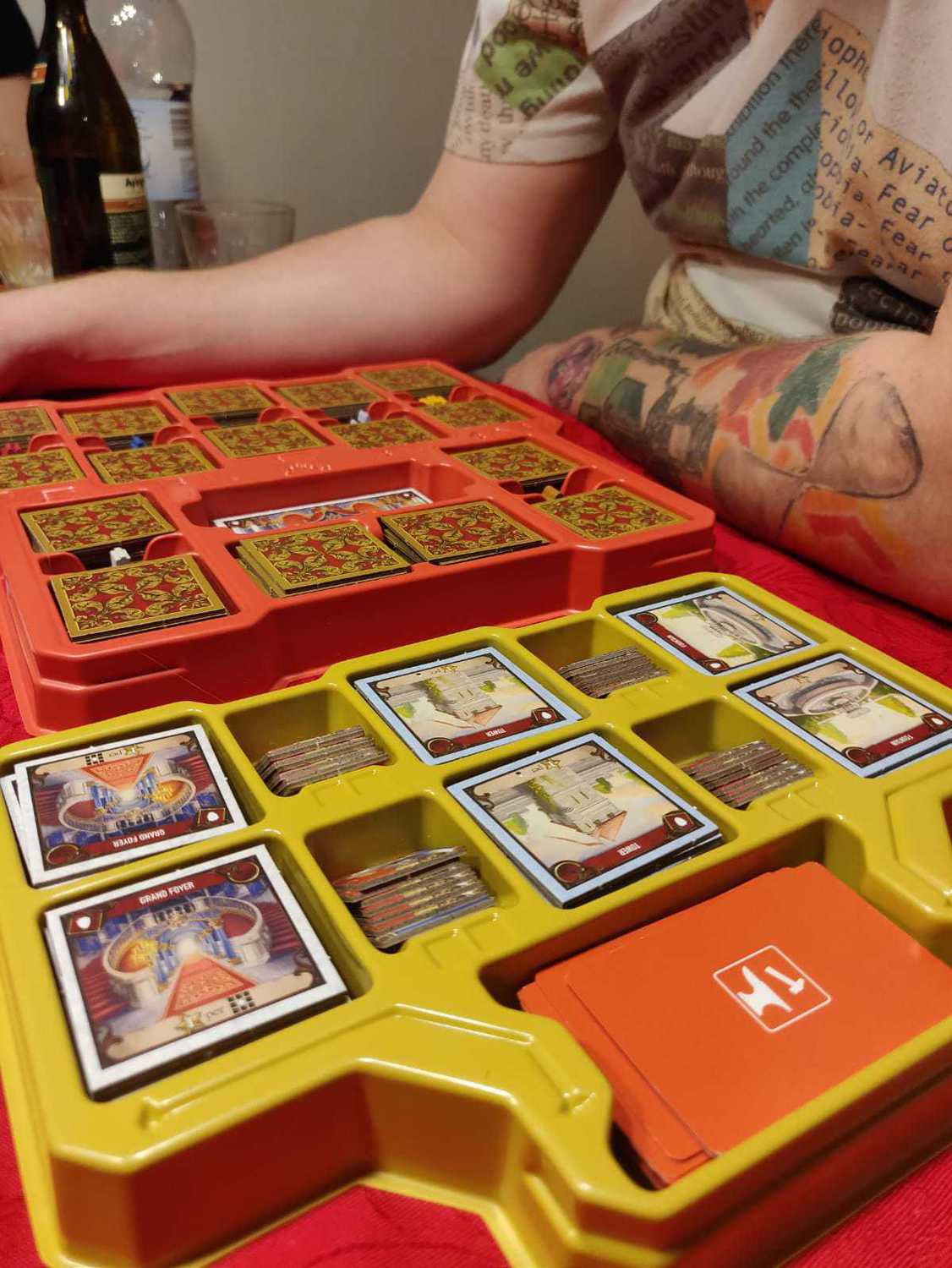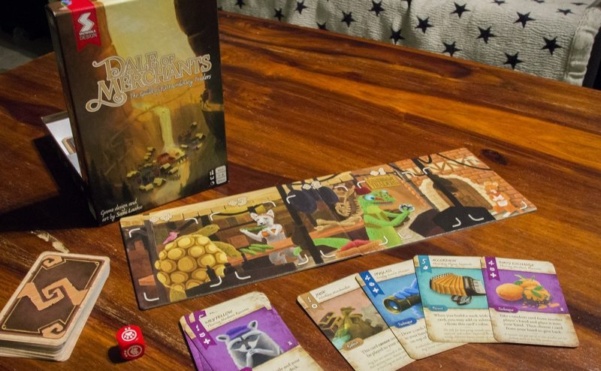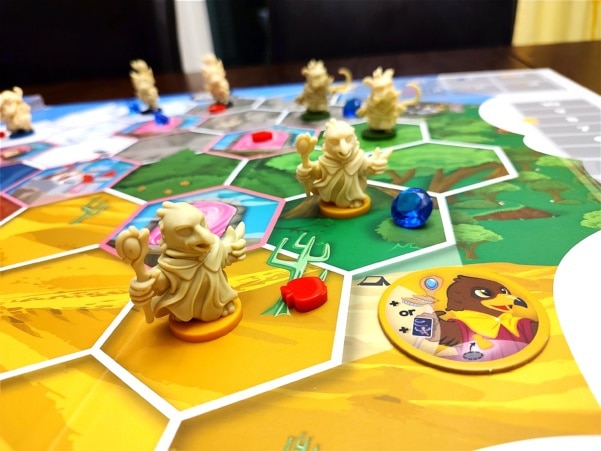Between Two Castles of Mad King Ludwig
Pöydällä has reviewed Castles of Mad King Ludwig and it’s follower The Palace of Mad King Ludwig. Now we’ll meet the newest game in the Mad King Ludwig series: Between Two Castles of Mad King Ludwig. This is an exceptional hybrid: it mixes two different games from two different publishers. Castles of Mad King Ludwig has now been mixed with Between Two Cities from Stonemaier Games. The recipe for this fusion is logical: Basic mechanic for play has been taken from Between Two Cities and scoring logic is mostly loaned from Castles.
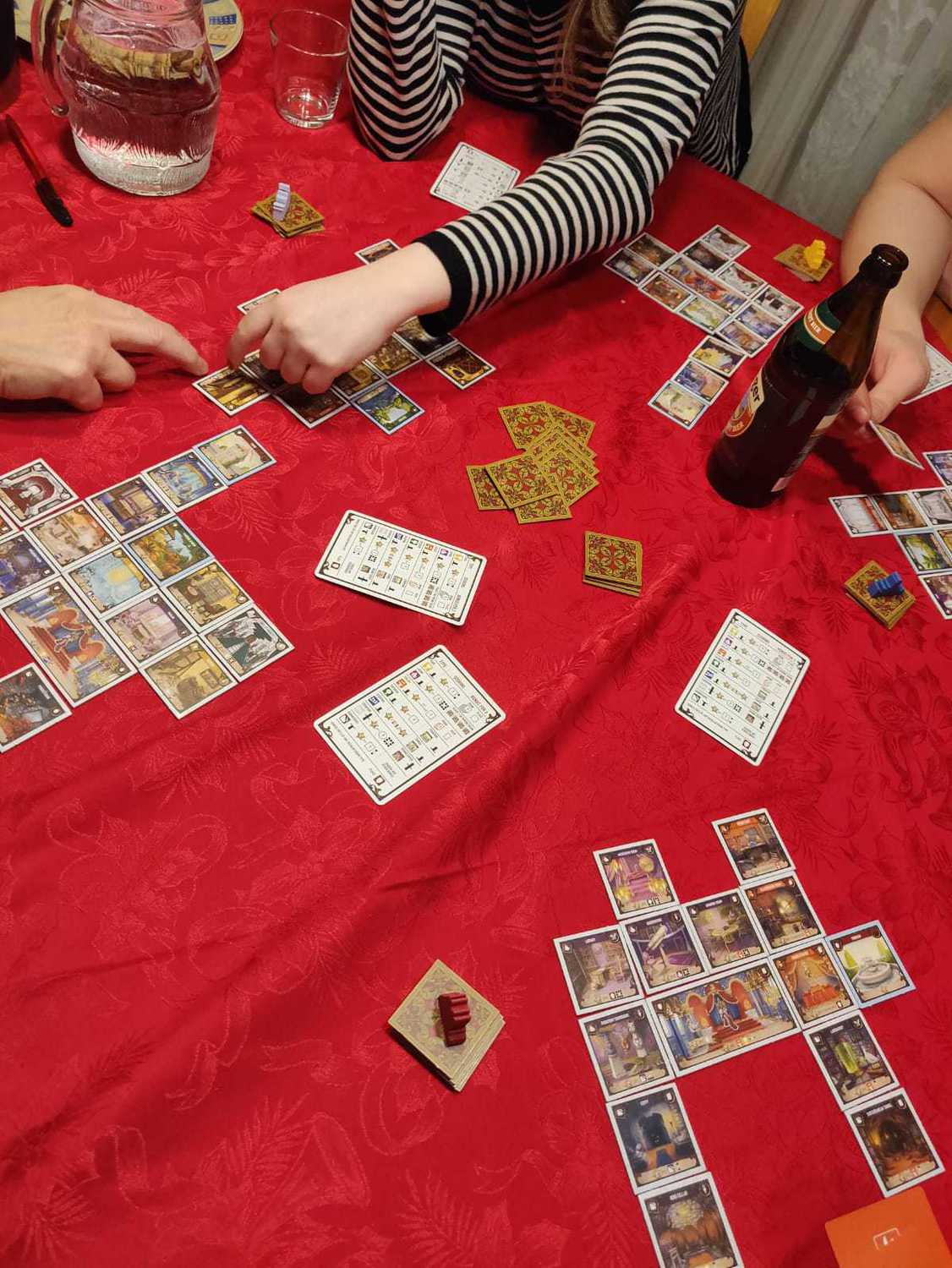
*Pöydällä board game blog has received a review copy from the publisher.
The Story behind Between Two Castles of Mad King Ludwig
I played Between Two Cities on the year it was published at a con in 2015. Players draft tiles to place in their cities. Each player shares a city with each of his neighbors. The city with fewer points is the one the player’s score is calculated from. The basic concept of the game was innovative and it worked very well, but in the end, it left me cold. City building wasn’t as fun as it should have been.
On the other hand, Castles of Mad King Ludwig is one of my favorite games. Players build their point-making-machines from tiles that have been set up for auction by other players. The biggest downfall of Castles of Mad King Ludwig is the complicated scoring mechanism which makes it easy to make mistakes. If we forget the scoring, we are talking about a peculiarly fascinating auction and building game. But, let’s not go into that deeper now, it’s time for Between Two Castles of Mad King Ludwig.
Between Two Castles of Mad King Ludwig is…uh…rethemed reprint of Between Two Cities. If we think like this, it’s a huge improvement. I see no reason to play Between Two Cities if Between Two Castles of Mad King Ludwig is available.
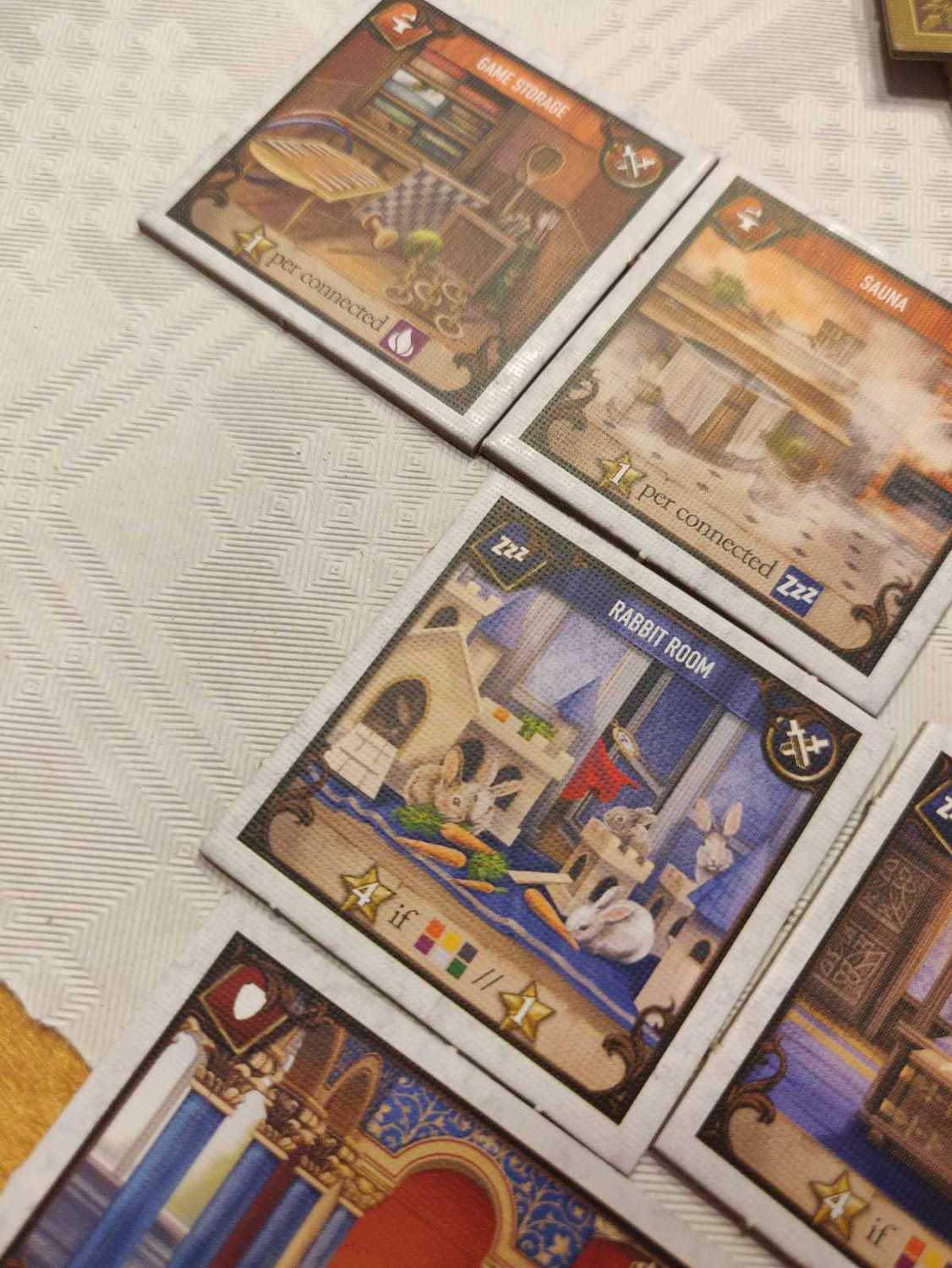
Optimizing the tiles
The game is played in two rounds that last about 45 to 60 minutes. At the start of a round, each player receives a set of tiles. Players select two and pass the rest to the next player. After that, the tiles everyone selected are revealed simultaneously and the negotiation begins! Which tile shall be placed to which castle. And oi, your neighbors will surely have their noisy opinions on where you should play your tiles.
The tiles are square which is somewhat of a disappointment to an old Castle of Mad King Ludwig-fan, but it’s actually better this way. The game flows on smoothly with the square tiles. The placing to the tiles to as fruitful positions as possible is everything!
On top of tile drafting, you have to be awake to remember to collect your bonuses. Playing the same type of rooms gets you nice bonuses which cause extra brain burning. It’s good, but it also somewhat cuts the flow of the game as two players talk about the bonus and others just wait for it to be done.
Scoring is somewhat of a problem in Between Two Castles of Mad King Ludwig as well. When the game ends, every player gets to marvel at a detailed scoring sheet. Then the silence begins as the players sit and count for the next 5 to 10 minutes. The tiles give points to other tiles so you really have to pay attention when counting the points. And finally, we get to announce the winners and the losers! Compared to the nice, nearly no downtime flow of the game itself, the scoring part feels like a slight slump to the whole experience.
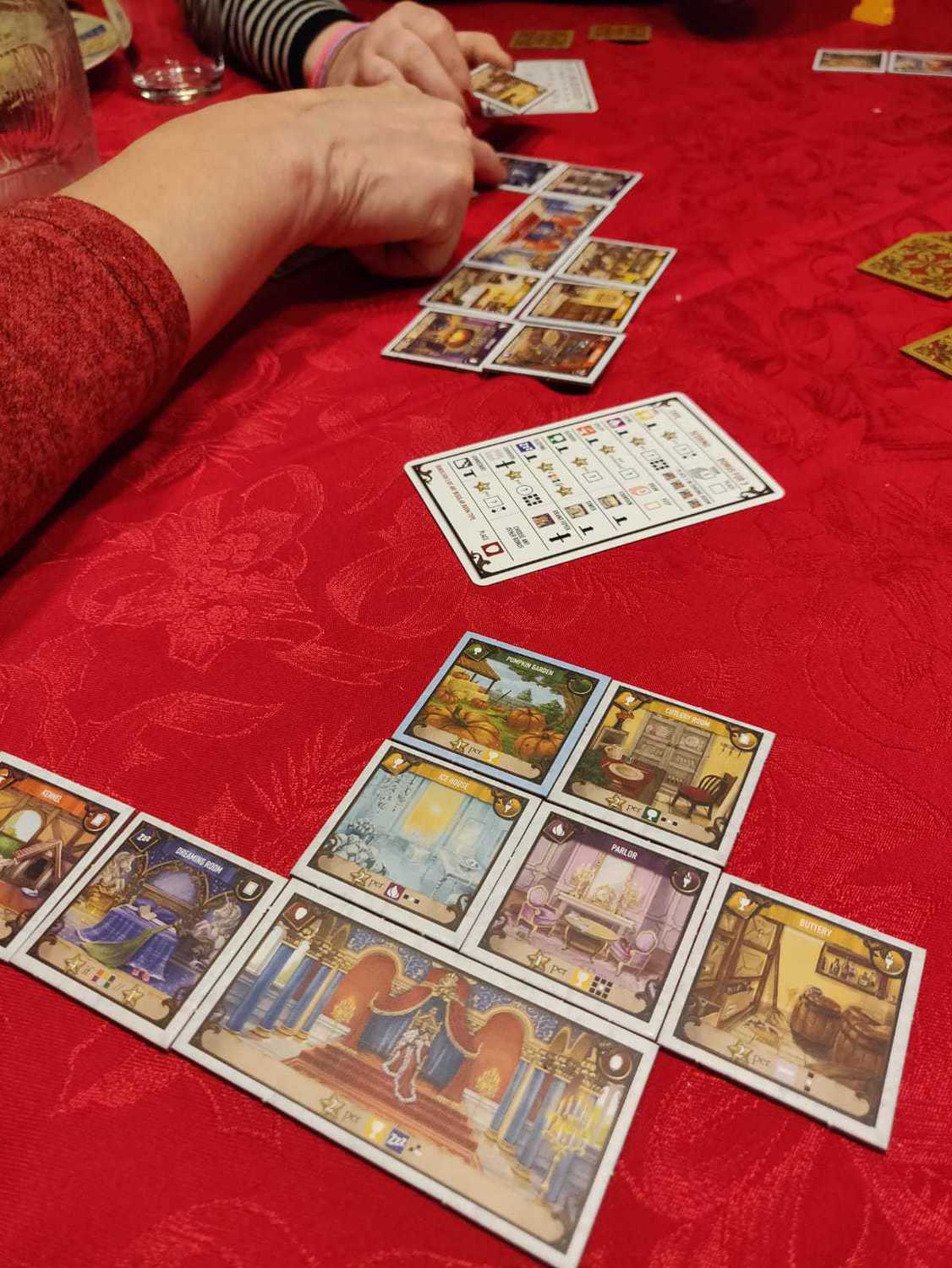
Between Two Cities of Mad King Ludwig is fun for everyone
The game works well for beginners too, to whom Castles of Mad King Ludwig might be too much. The rule book is clear and on top of that, there’s Watch It Played rules explanation video available on YouTube. The game beautifully balances the skill level of the players by ignoring the highest score and only counting the lowest one. In one game I managed to build the greatest but also the worst castle of the game – which meant I lost, no averages, no nothing!
Between experienced players, the game shines at it’s brightest. Balancing between your best and worst castle but also between your neighbor’s best and worst castle really takes some thinking. There is a weakness in the game for those who take the game very seriously: the points of all the castles are open information through the whole game. The time it takes to add up all the points is a huge chore so no one in their right mind would do it, but…you never know how seriously people take these things. The risk of Analysis Paralysis is real!
As a social situation Between Two Castles of Mad King Ludwig is wonderful. Negotiations feel devious as all the players try to get their comrades to cooperate. At the table, the limitations of humanity are also present: to listen to a player on your left you have to harshly turn your gaze away from the player on your right. And somewhere in the far distance, you hear the bitter cries: “no, don’t put that tile there, place it here in our beautiful castle!” I never thought I’d be so delighted by a really good insert, but the Game Trayz in the box really make the setup a breeze. They really work.
This game mixes Castles of Mad King Ludwig and Between Two Cities beautifully. The social aspect and uniqueness of Between and the complexity of tile placement from Castles. Two-player games don’t really work that well and remind me of the two player game of the original 7 Wonders: in theory, it adds a new strategic level as you switch playing the dummy player but in the end, it feels like a chore. Between Two Castles of Mad King Ludwig works very well with four or more players and can be played with players of all skill levels.
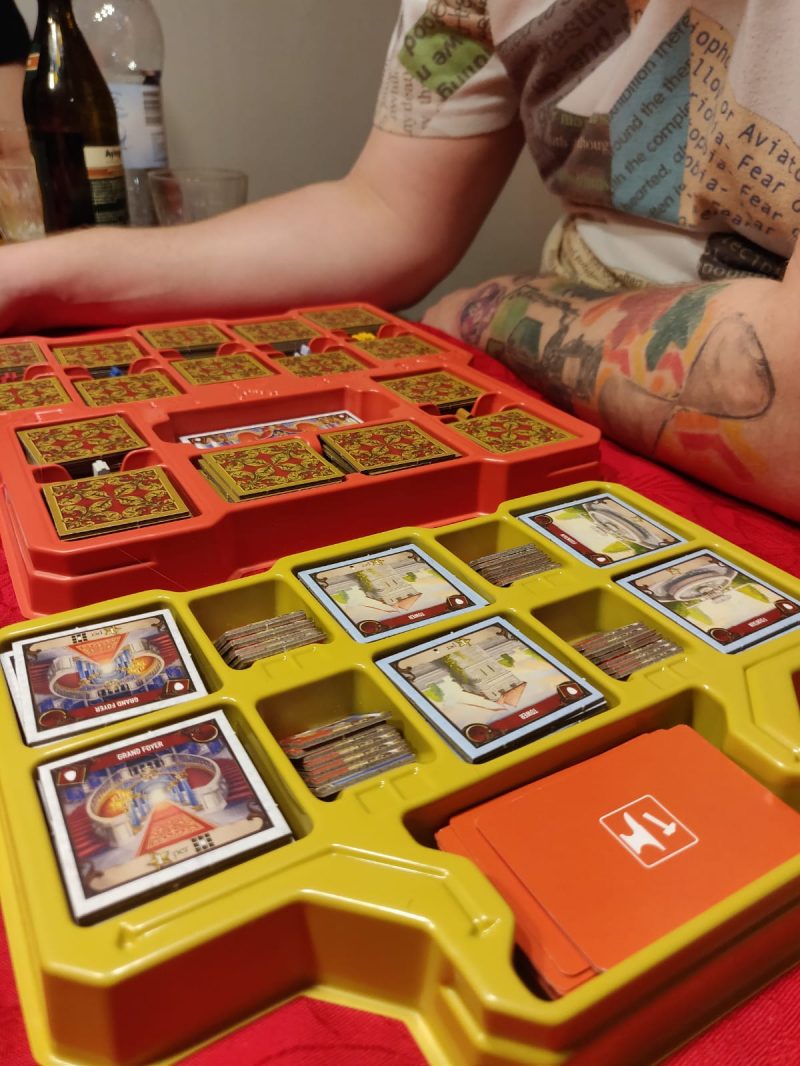
-Clear rules
-Quality components and great inserts
-Scoring is slightly troublesome
- Haastattelussa Shut Up & Sit Down - 19.07.2024
- Lautapeli joululahjaksi? – Parhaat joululahjat 2023 - 21.11.2022
- Syrjintäkyselyn tulokset - 26.09.2020


